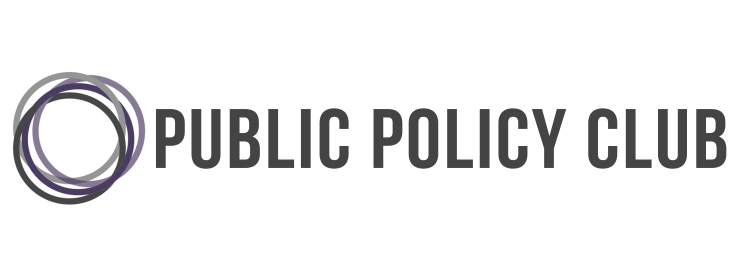By Stevie Hoesel
In baseball, a curveball refers to a pitch that appears to be heading in a straight line toward a point but deviates from its path just before the batter takes a shot at it. It is a strategic move in the game, where, after three strikes, you are out — similarly, political parties pitch policy strategically when it’s their turn. In April 2024, Aotearoa New Zealand’s National Government announced its intention to reinstate the three-strikes sentencing law, previously repealed by the Labour government in 2022. After several years of data overseas and domestically showing three strikes to be ineffective at achieving its policy goals of deterring crime by reducing reoffending, its reintroduction by this government is emblematic of a curveball from the sport its namesake was for. Using theoretical and analytical frameworks in public policy, we can begin to unpack the physics of this curveball.
Criminal reoffending is a classic wicked problem because there is a strong correlation between social inequity and crime. However, it is not enough to say that crime statistics improve only by alleviating social inequity. This may be true, but it does not fully account for all possible crime catalysts. By understanding that recidivism is a wicked problem that cannot be fully solved, we can look at various policy options to tackle the issue.
This piece comes at the same time the Government announced an 810-bed extension to Waikeria Prison and raised funding to the Department of Corrections by $1.9 billion to increase prison capacity (National Budget 2024, New Zealand Treasury). We evaluate the three strikes’ previous policy evaluations as they are placed at the beginning of another policy cycle. The question at the centre of this article is, despite the substantial cost of the policy and several analytical pitfalls, why is this policy being put back on the table, and is there a better way of addressing its core issue?
National and ACT introduced the three strikes law to New Zealand in 2010, initially under the Sentencing and Parole Reform Act. The law’s inspiration was largely imported from the United States upon an ACT MP’s return home after a trip to California (Wang 2021). The law imposed sentencing requirements on judges, including requiring the mandatory sentencing of the maximum penalty for 40 qualifying offences. Titled after the baseball rule, ‘three strikes and you’re out,’ this law required increasing the severity of punishment for each qualifying offence until the third strike, whereby a person would be charged the maximum penalty. The Ministry of Justice, under the Labour government, repealed the law and raised several concerns: there was little evidence that the law had reduced serious offending; it restricted the judiciary’s ability to consider the individual circumstances and context of the offending when determining sentences; Māori were overrepresented in the group of offenders who had received a strike; the High Court, Court of Appeal, and Supreme Court had found that sentences imposed under the regime contravened the Bill of Rights Act; and the Courts can already impose sentences equivalent to those under the three strikes law when it is considered appropriate. (Ministry of Justice, 2021).
The concerns of this report are echoed by overseas data, which does not show any relationship between three strikes and reduced reoffending. Instead, this data shows that the three strikes law increases prison populations and demands more resources to maintain (Wang, 2021). By 2018, the then-Labour government was making moves to overturn the law but was ultimately only successful in 2022 (Stuff NZ, 2018). Now, in 2024, despite having over a decade to prove the three strikes as a productive policy, the National Government is seeking to bring back the law with a few modifications to make it more “workable” (Beehive, 2024). According to a press release from the Beehive, the new three strikes will cover the same 40 serious violent and sexual offences as the former legislation, with the addition of the new strangulation and suffocation offence; introduce a new requirement that the three strikes law will only apply to sentences above 24 months; extend the use of the “manifestly unjust” exception to allow some judicial discretion to avoid very harsh outcomes and address outlier cases; provide a limited benefit for guilty pleas to avoid re-traumatisation of victims, and to improve court delays; and see that people who commit murder at second or third strike receive an appropriately lengthy non-parole period. (Beehive, 2024)
The revision makes minor adjustments, such as allowing for exceptions and increased discretion of the manifestly unjust principle in court. This revision, however, does not directly address the previous concerns regarding efficacy, efficiency, and equity. There is no evidence that these changes will make the policy any more effective than it previously was in deterring crime. The legislation still fails all five phases of a social impact assessment. It did not go through public consultation with all stakeholders, no alternatives were proposed other than minor revisions to the previous law with little consideration of earlier failures, the differential impacts were not addressed, and there remains no mitigation plan or expressed evaluative data.
The assumption that underlies the three strikes law is that people will be less likely to reoffend when they know that punishment will increase. The policy objective, then, is to reduce reoffending, with the theory of change behind it being that if the government imposes increasingly punitive sentences, people will be less likely to reoffend. The policy tools necessary are increasing the budget for police, corrections, and courts to increase sentencing. To measure success, we would then look to reduce recidivism overall. What is being proposed as the new status quo is the “making New Zealand great again” approach by returning to an imagined ideal past where crime was significantly lower. This temporal framing is a large part of the justification for the series of policies from a tough-on-crime approach, including returning the past three strikes largely in its original form. The status quo before the change in government was arguably doing well from an incrementalist perspective; crime, on average, was at a plateau. Regardless, any incrementalist approach will be subject to tweaks of each government. Arguments for more significant system overhauls are also on the table.
The three strikes legislation is not an effective tool for reducing reoffending. The nature of its reintegration and recycling is evidence that we must look at issues like this from a different perspective. What’s most productive now in this policy space is to invest in the research and development of frameworks specific to Aotearoa, so we do not have to bring back cheap shots and ground balls but instead continue to innovate in the justice reform space.




